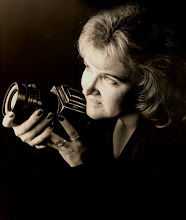To create a VR, a series of photographs are stitched together. The photos can be taken either on film or in digital format, but if film is used the negatives need to be scanned and then saved in a digital format. Digital is much easier - trust me! I have created them both ways.


I first started creating VR's a dozen years ago when I came to Cal Poly Pomona as the University Photographer. The technology was extremely new. In fact, Apple had began developing QTVR's only three years earlier. The first QuickTime VR (QTVR) was created in 1994. Apple is the forefather of panoramic technology. Apple's QuickTime Authoring Studio was an early software used to stitch together images creating a panoramic photograph that would then be exported to a .mov format. This interactive movie allowed users to move about within a 360• environment by using a mouse or directional keys. Embedded "hotspots" allowed users to explore an environment, watching for the mouse to change shape indicating that something special might occur if they clicked the mouse to engage the content.
VR technology has evolved in many ways through the years and the VR has found it's way into many facets of our lives. Hotels and cruise ships utilize VR's to show their future patrons what their rooms might look like. Realtor's began using VR's to better show the homes of their clients to potential buyers. With a "next best thing to being there" feel, the VR has served as a substitute, a surrogate of sorts, for those who wish to see something, experience something or travel without traveling.
In education, VR technology presents a potential for experiencing the world without ever having students leave their computer desk. The impact for such technology is tremendous. Given the economic crisis that the nation is currently experiencing, VR's incorporated into virtual field trips (VFTs) significantly reduce costs of traditional field trips but offer engaging opportunities for students to be in charge of their own exploration and learning.
VR's in a Higher Education Environment
At Cal Poly Pomona VR's have been implemented in a variety of projects:
In 2002, a team of Instructional Designers at Cal Poly Pomona were selected to work with faculty from the College of Science and students and from iPoly High School. The resulting learning unit, Science as a Catalyst for Lifelong Learning, was featured on the new Apple Learning Interchange. A key multimedia element on this project was the innovative use of 360• VR's. The VRs were linked to videos that were taken of students and faculty in the class discussing key elements.

In 2003, the Instructional Design Studio at Cal Poly Pomona created a recruitment CD for the University called Choosing the Right University which incorporated a series of VR's into the content. The VR's were designed to give potential freshman students an idea of what the campus looked like from an interactive perspective.


No comments:
Post a Comment